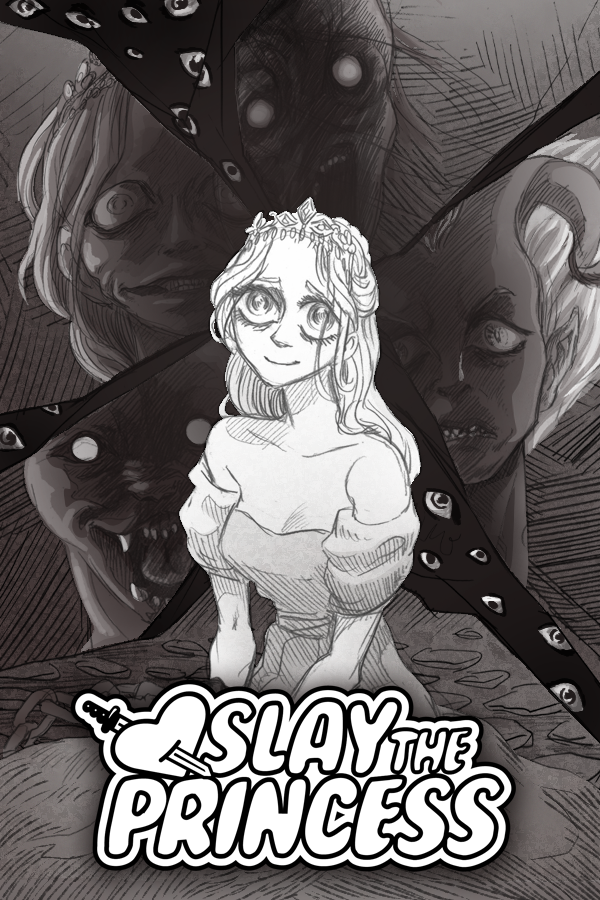From Damsel to Decision-Maker: Gender Representation and Agency in Slay the Princess
The princess trope, a staple in literature and media, has long encapsulated the ideals of beauty, purity, and passivity. Traditionally, princesses are portrayed as virtuous damsels in distress, awaiting rescue by a valiant hero. This archetype reinforces gender norms and societal expectations about femininity and agency.
However, contemporary narratives are increasingly challenging and subverting these stereotypes, offering more nuanced and empowering representations. One such example is the game Slay the Princess, which deconstructs the conventional princess trope through its unique storyline, character development, and psychological depth.
This essay explores how Slay the Princess subverts the stereotypical princess trope, drawing on psychological theories and peer-reviewed sources to analyse its impact on perceptions of gender and agency.
Traditional Princess Trope: An Overview
The traditional princess trope is deeply rooted in fairy tales and classic literature. Characters like Cinderella, Snow White, and Sleeping Beauty epitomize this archetype, embodying beauty, innocence, and passivity. These narratives often revolve around their need for rescue, emphasizing their helplessness and reinforcing the idea that women require male saviours (Parsons, 2004). The psychological impact of this trope is significant, shaping societal expectations and influencing the development of gender identity from a young age (Coyne et al., 2016).
Slay the Princess: A Narrative of Subversion
Slay the Princess, a narrative-driven game, takes a bold approach to the princess trope by presenting a princess who is not a passive, virtuous damsel but a complex and morally ambiguous character. The game's premise, which involves the player deciding whether to slay or save the princess, immediately sets it apart from traditional narratives. This choice-driven structure allows for multiple endings, each revealing different facets of the princess's character and challenging the player's preconceptions.
Deconstructing Innocence and Purity
One of the most striking aspects of Slay the Princess is its deconstruction of the princess's innocence and purity. Unlike traditional princesses who are defined by their moral perfection, the princess in this game is shrouded in ambiguity. Her motives are unclear, and her demeanour oscillates between vulnerability and menace. This complexity forces players to confront their biases and question the moral binaries that underpin the traditional princess trope (Zipes, 2012).
Agency and Empowerment
The game also subverts the trope by granting the princess significant agency. Rather than being a passive figure awaiting rescue, she actively influences the narrative and the player's decisions. This shift from passivity to agency is crucial in redefining the role of the princess and challenging traditional gender roles. Research indicates that representations of female characters with agency can positively impact players' perceptions of women's capabilities and roles in society (Behm-Morawitz & Mastro, 2009).
Psychological Theories and Implications
Cognitive Dissonance and Moral Ambiguity
Slay the Princess leverages cognitive dissonance to deepen its impact. Cognitive dissonance theory posits that individuals experience psychological discomfort when confronted with information that contradicts their beliefs or values (Festinger, 1957). By presenting a princess who defies traditional expectations, the game induces cognitive dissonance, compelling players to reconcile their preconceived notions with the character's complexity. This process can lead to a reevaluation of stereotypes and a greater appreciation for nuanced representations of femininity (Eagly & Karau, 2002).
The Hero's Journey and Gender Norms
Joseph Campbell's monomyth, or the hero's journey, has traditionally been a male-centric narrative structure. Slay the Princess disrupts this model by placing a female character at the center of a morally complex and active role. This shift challenges the gender norms associated with the hero's journey and opens up new possibilities for female characters in narrative media (Baker-Sperry & Grauerholz, 2003).
Cultural and Societal Impact
The subversion of the princess trope in Slay the Princess has broader cultural and societal implications. By challenging traditional representations, the game contributes to a growing movement toward gender equality and the dismantling of harmful stereotypes. Media representations play a crucial role in shaping societal attitudes, and more diverse and empowering portrayals of female characters can foster greater gender equity (Steyer, 2014).
Influence on Young Audiences
The impact of subverting the princess trope extends to younger audiences as well. Adolescents are highly impressionable, and the media they consume significantly influences their understanding of gender roles and expectations. Games like Slay the Princess that offer complex and empowered female characters can promote healthier gender identities and reduce the internalization of limiting stereotypes (Coyne et al., 2016).
Simply Put
Slay the Princess illustrates how contemporary narratives can subvert traditional tropes to offer more nuanced and empowering representations of female characters. By deconstructing the princess's innocence, granting her agency, and inducing cognitive dissonance, the game challenges players to rethink their assumptions about gender and morality. This subversion has significant psychological and societal implications, contributing to a broader movement toward gender equality and more diverse media representations. As media continues to evolve, the success of games like Slay the Princess suggests a promising future for the portrayal of complex and empowered female characters.







Explore how Slay the Princess subverts the stereotypical princess trope, drawing on psychological theories and peer-reviewed sources to analyse its impact on perceptions of gender and agency.